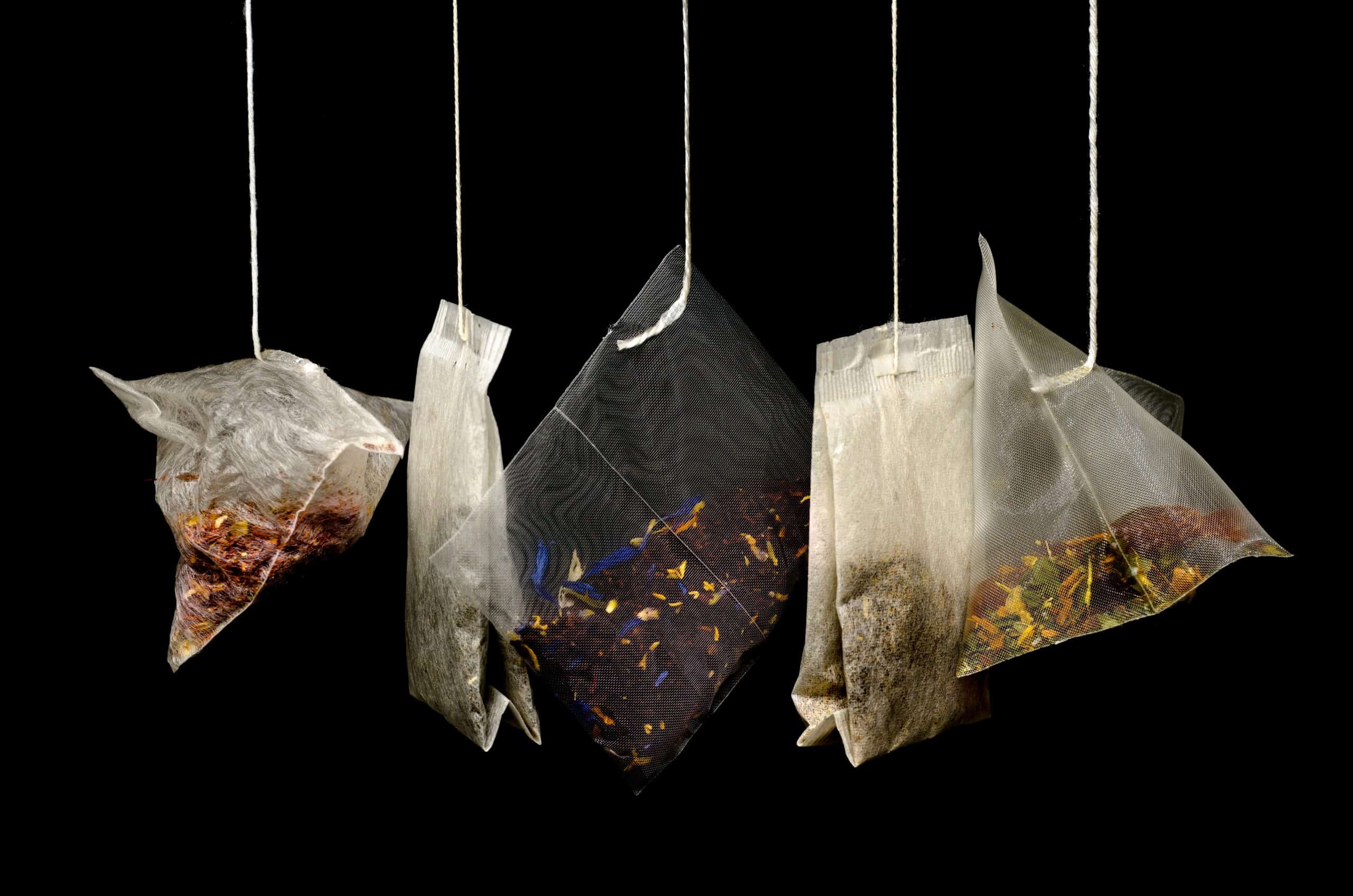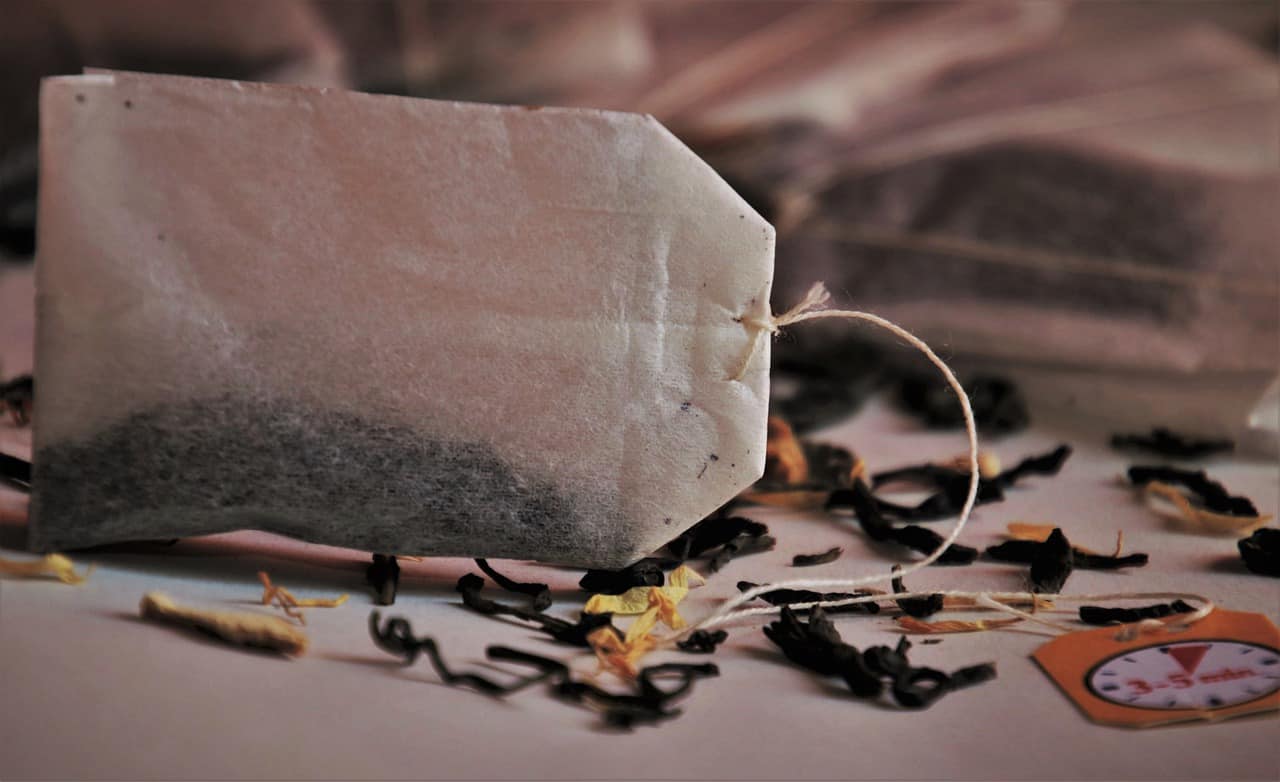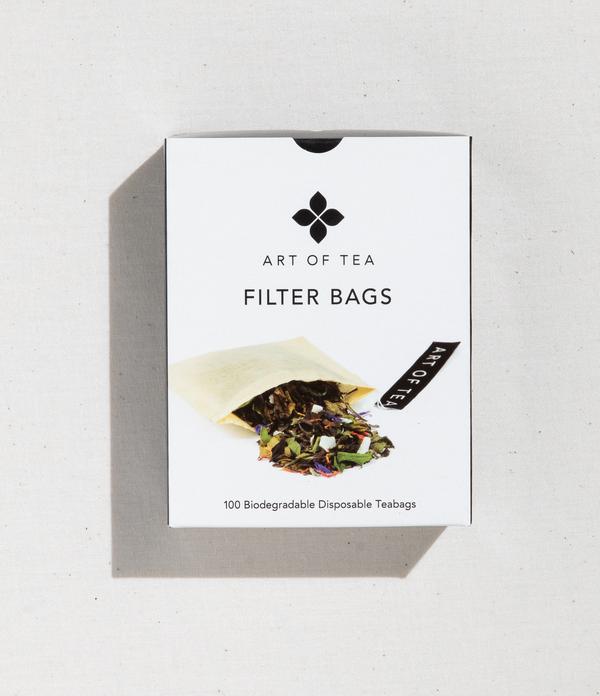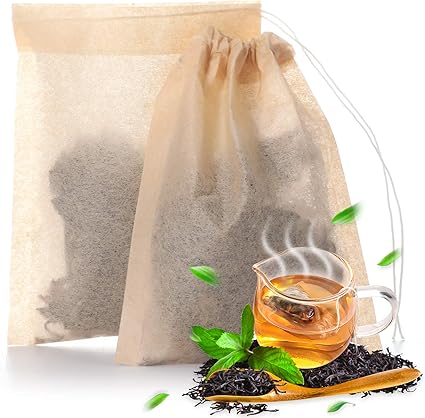I may be “slightly” addicted to tea. For me, tea bags are a genius idea for those of us that can’t (or don’t want to) measure and prepare our own tea. I work 12-hour days and drinking a loose leaf tea in a tea infuser can be difficult. That is when tea bags come into play.
While some people believe tea bags are not safe. Some people wonder: “Do tea bags expire?”. There is a lot to know about the history and safety of teabags.

Tea Bag History
I always like to start with a little bit of history on a subject. I find it interesting to know some facts before diving into a topic. I also find that there is always current and updated information. Americans’ tea bag usage is 98%, while the UK stands a bit below the US at 96%
Do you think your tea tastes better in or out of a teabag? The current belief is that tea tastes better without the added tea bag. Back in the 12th century, the belief was that you needed the tea leaves removed for great-tasting tea. Then there is the whole convenience and easier-to-clean notion of a teabag.
The first commercial appearance of the tea bag was in 1904. Thomas Sullivan was an American credited with bringing the tea bag to the world in 1908. It was an accidental discovery as Thomas used silken bags to deliver his tea to customers. The customers used the tea inside the bag to brew, but complained that the silk was too fine. Our inventor, Thomas, created the first purposeful tea bag out of gauze. But several years prior, Roberta C. Lawson and Mary Molaren of Milwaukee filed for a patent for a “tea leaf holder”. The design (like Sullivan’s) was made of the same stitched mesh fabric.
The rectangular bag we see more commonly today was not created until 1944. Before 1944, tea bags were like sacks or “bags”. In 1952, Lipton tea created the flow-through tea bag. The bag had four sides, and in 1992, Tetley introduced a round teabag.
After gauze, came paper teabags. The tea bags are the same as we see today. They came in two sizes and contained the familiar string with a tab at the end for easy removal.
Our teabag first began as a tea sack used for delivery. From a sack to a bag. From silk to paper. Now, what about those tags? Lipton Tea claims credit for being the first to use those tags. Lipton used the tags for printing brewing instructions.
William Hermanson (one of the founders of Technical Papers Corporation of Boston) invented heat-sealed paper teabags. William sold his patent to the Salada Tea Company in 1930.
To a true tea connoisseur, a tea bag is out of the question. A tea bag goes against the grain of their idea of a great cup of tea. They believe the teabag restricts the natural beauty of the tea leaf’s flow and unraveling in the hot water. They believe the tea bag can change the aroma and flavors of the tea. As mentioned earlier, the appearance of the tea itself changes.
There is yet a good use for tea bags, according to tea lovers. With the introduction of herbs and spices, they can be infused with tea. The tea bag makes it possible to measure the ingredients. Teabags can keep the ingredients contained inside the bag while brewing. Teabags also brew and still while allowing the flavor to escape.
I use tea bags for work and have found some amazing teas that can be brewed from a bag. I buy tea already bagged as well as have my own bags that I use to brew my single leaf teas. I also partake of several tisanes, and a tea bag makes that more convenient.
Looking for great teabags?
We’ve got a few you may be interested in. Life is busy. If you want to know more about the following teabags and safety, just click on the links.
The Purpose of the Teabag
While the purpose of the tea bag may seem simple. That wonderful idea did not sit well with everyone. While created by chance, the teabag solved a few problems:
- Messy tea leaf removal
- Easy cleanup
- Easy compact storage
While it seemed like such a great idea, some things had to change for the tea bag to be so successful. For the tea leaves to work, they had to be cut. Most tea leaves were too large to expand well in the tea bags. This created a tea known as CTC (crush, tear, curl) tea. CTC teas are considered a lower grade of tea.
For the tea connoisseur, this was not acceptable. Where was their tea leaf, the experience of watching it expand and grow in their teacup? CTC tea took on a different experience, and that made some tea drinkers unhappy. Fannings are pieces of tea leaves considered unsuitable for loose leaf tea. Fannings are also used in teabags.
Teabag design
That’s a lot of history for a teabag. It does have its relevance in our tea community for sure. The teabag has evolved as well. Let’s look at the different types of teabags.
When creating a tea bag, a lot of thought went into it. And you thought it was a simple process. There is so much you have to consider:
- Shape – The shape of the teabag can be round, square, or triangular. These can be made out of paper, and while these sizes seem to have more to do with aesthetics than function.
- Tea Sock – From Thailand and still available. It’s a piece of fabric that is wrapped around a wire circle. Filled with tea and used in pots or cups.
- Pyramid – One of the latest fads in tea bags. Adopted by a few tea companies that swear by them, and their customers agree.
- Stick – The latest design of the teabag goes to the stick “bag. The stick is generally made of foil and perforated to allow for a more “instant” tea approach.
- Pods – The same as the coffee makers, but these include tea and flavored teas for us with the automated machines.
We don’t want to leave out the various creative tea bags created.
- The fish teabag – Exactly as it sounds. A tea bag shaped like a fish that you fill with tea. You then plop it into your cup. The tea expands, so does your fish. When you play with the cord, the fish bag appears to move, like a fish.
- Origami tea bags – tea with geometric shapes.
- Dual tea bags – Teabags with a dual tea option of two filters on one design.
- Silicone designs – Several silicone designs were created to amuse the tea drinker
Then there are tea bags of various shapes, like:
- Stars
- bunny ears
- Hearts
- planes and more
You can find a whole collection of tea infusers HERE.
The list can go on, but it gives you an idea of the ingenuity of the tea market.
Most designs are fads and will come and go. Others are genius marketing techniques used to stand out among the rest. Either way, it makes for a delightful cup of tea, don’t you think?
Do tea bags expire?
A concern would be the toxicity of the teabag. Another concern can be the process by which the tea bag is made and the materials used. Once heated, the concern is whether any toxins leach into the teacup? That is a lot to consider. Teabags should be used within a year. While they may be used after that time, they may change the color or flavor of your tea. What we will look at is the bag itself, the material, and the sealant used. We can discuss what the safest product is to brew our tea in.
- Paper – Teabag paper is made of cellulose and cotton. This type of paper is treated with a chemical to help hold the bag together. The chemical is epichlorohydrin. As the tea bag heats, those chemicals can leak into your tea.
- Plastic -Well, they are made of plastic, and we all should know by now that hot water and plastic do not make a good outcome. They are also not biodegradable. The plastic used is a viscose rayon, PVC, thermoplastic, or polypropylene. The plastic or silken tea bags are made of nylon or polyethylene terephthalate. These materials are not biodegradable. But have a higher heat tolerance and do not leach as fast in the hot water. This in-depth study shows the concerns about plastic within tea bags.
- Nylon – Nylon is not biodegradable. There is a temperature at which Nylon and plastic start to break down. That point is called the glass transition. For these materials, it’s generally around 169 degrees (for PET) and 116 degrees for nylon. which is much lower than the temperature I use for my teas. The boiling point of water is 212 degrees. I think you can see the problem with these materials.
- Corn-based plastic bags – These are made from GMO corn, and no one wants that. Some argue this bag can be biodegradable. It is not recognized as such, and considering its source, who wants to put it BACK into the earth.
Teabags are sealed with glue, staples, heat, and sewn by hand or machine. This information is not shared by tea manufacturers. If you are curious about the structure of your tea bag, ASK! Still a very important part of the teabag. The sealant is something that needs to be considered.
Tea String and Tag
Not considered a part of the food product. Cotton pull string can be made of bleached or unbleached cotton. The sting does come in contact with your hot water, and how many times has that tea tag fallen into your tea? There can be ink, glue, and pesticides on that tag, and these things need to be considered.
What’s a tea drinker to do?
It makes me think about the Chinese or Japanese tea ceremony. There are no tea bags used. The tea is infused into the water, and then that brewed tea is shared in other cups for people to partake of. It really does make a case for being a less toxic way.
Reflecting back on my day job. The fact that I simply cannot brew a cup of tea without a teabag. My work setting is fast-paced, and I’m thrilled to have an electric tea kettle. For me, I will have to use a tea bag or an infuser. I choose a tea bag because it is simpler and easier. I brew and toss the bag away. Like many people do not have time to deal with bagless brewing or even the use of a stainless steel infuser. To give the tea bag a little bit of credit, it has come a long way from the CTC days.
So what can I do? What can you do?
Choose wisely and read labels. Ask about the products you are using to brew your tea with.
Choose organic or non-GMO teas. If someone cares enough about the tea, then you can almost trust that the tea bag will be safe as well. Keep in the back of your mind as you shop for tea bags that the string and tag are not considered food product.
Avoid teas from China. China is the largest user of pesticides, and most do not wash their tea. Those pesticides are coming right to your door and into your cup. There is a study done by Greenpeace that tested Chinese tea. The study found that every tea sample had at least three different pesticides.
Watch your water temperatures and try to stay below the 185-degree mark
Use only glass or stainless steel containers to avoid more leaching into your cup of tea.
Finally, ASK! If you are unsure, connect with your tea influencer or merchant. Ask them about the products and tea bags they suggest and use themselves.
How to test your tea bags
Please use caution when doing this!
There is one way that I know to test your paper teabags.
Grab a lighter or match and head to your tea cupboard. Grab your favorite tea bagged tea, remove the tea, and light the tea bag on fire.
With the tea bag lit, observe what is happening. Does the teabag burn or melt?
If it burns, it’s a good chance it’s a biodegradable product. Plastic will melt. The melting may be slight, so you have to pay attention. Melting “paper” is a great indication that your paper teabag contains plastic.
So will your teabag melt? 
Conclusion
Ease of use is always a consideration, and for me, using a teabag at work is really the only way I’d be able to enjoy tea at work. It seems convenience has a winning factor in teabag usage. While tea drinkers may tell you they don’t use tea bags, statistics prove them wrong.
Taste is another consideration when thinking about tea bag usage. What flavor does it add to the brewed tea? How do we know the difference? The only way to figure it out is to remove the tea from the bag and brew it, then compare it to the taste of the tea bag brewed tea. Toxicity is the main reason we are concerned about the teabag.
Lastly, I don’t need to worry about whether tea bags expire. I don’t think tea will hang around over a year in your home. It doesn’t in mine!
Our goal is to live a life without toxins. Toxicity is yet another reason we are concerned about the teabag. Our goal is to live as less of a toxic life as we can. We can do that by being informed, asking questions, and reading labels.
Frequently Asked Questions About TEA
Are teabags healthier?
Leaves in tea bags are cut smaller, making the tea brewing process easier/faster. While brewing this way can extract more bioactive compounds, it can also affect the pH level of in tea.







3 thoughts on “The History And Safety Of Tea Bags”
Pingback: The Best Of Tea Infusers - My Tea Vault
Pingback: Pyramid Tea Bags, Are They Better Than What You Are Using Now? - My Tea Vault
Pingback: The Best Gifts To Give A Tea Lover This Holiday Season - My Tea Vault